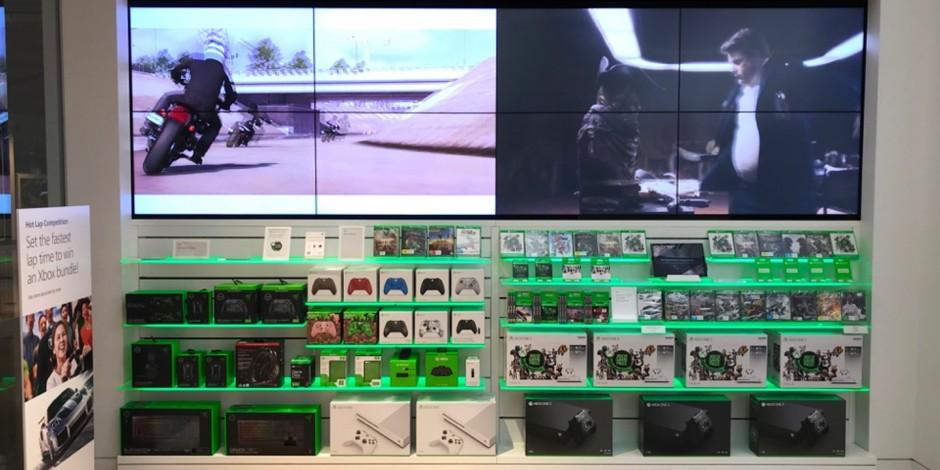Advanced TV: where we are now and where we are headed
Audiences are increasingly turning their attention to Advanced TV formats due to their ability to deliver compelling content to viewers 'anytime, anywhere.' According to eMarketer, subscription OTT viewership is on the rise in Latin America, most notably in Mexico and Brazil where 20.9% and 17.1% of each country's population will watch video via any app or website that provides paid subscription access to streaming video content over the internet.

To continue to reach highly-engaged audiences and achieve business goals, brands’ media spend and allocation will evolve and adjust. However, to effectively capitalize on these new models, they’ll first need to understand how exactly the TV landscape is changing and the viewership trends emerging alongside the development of Advanced TV.
Understanding the TV landscape
Often described as the traditional TV viewing experience, brands can still reach audiences who are viewing scheduled programming through a cable service. The following terms are used to describe this delivery model in advertising.
- Linear TV: Linear TV represents real-time television service that broadcasts scheduled programming, conventionally over the air or through satellite/cable, and is not streamed to a specific user. While still relevant, IP devices are becoming more dominant and we predict that in the future, TV consumption will be largely based on devices connected to the internet.
- Addressable TV: Addressable TV serves household-specific TV ads based on an advertiser defined target in a privacy compliant manner. It allows brands to serve their message to the best qualified households. To fully take advantage of addressable in Latin America, we need to first make set top boxes IP connected, and second implement software that enables addressable targeting. Some paid TV providers like Sky, Direct TV, TotalPlay and INVIDI have achieved portions of this, but need to leverage the right mix of technologies to fully scale offerings.
As broadband and mobile internet speeds continue to improve, it is expected that digital video viewership will increase to 317.9 million individuals in 2023, at which time it will account for nearly half (48.2%) of residents in Latin America. So, as viewers increasingly consume content on new platforms like mobile devices, we should understand the following terms, which fall under 'Advanced TV'.
- CTV: Connected TV is any type of television screen that can stream digital video. It does not require a TV set that comes out of the box with an internet connection, the so-called smart TV. Viewers can feed TV-over-the-web to their sets using streaming devices. Examples include Apple TV, Roku, gaming consoles and Smart TVs, like Samsung.
- OTT: Over-the-top TV, refers to TV-like video content delivered over the internet, bypassing the traditional TV infrastructure. Streaming services like Direct TV Go and Netflix fall under this category.
- SVOD: Subscription video on demand. SVOD provides users with a premium, ad-free experience in exchange for a fixed monthly subscription fee, typically for unlimited consumption of included content. Amazon Prime is an example.
- AVOD: Advertising video on demand offers either a free or reduced-price streaming model that includes ads. Under this model, advertising revenue is used to offset production and other hosting costs. Pluto TV is an example.
Resulting trends
While the influx of content and delivery models are giving consumers more choice, there is something to be said for a cost-benefit analysis for the number of paid subscriptions one consumer is willing to commit to. In order to expand reach to all consumers in Latin America, we need to see more AVOD models emerge. In the US, platforms like Hulu offer tiered pricing, correlating subscription price with advertisements (more ads equal lower price). We’re yet to see this become popular in Latin America, but realize that in order to see wider adoption, this, along with incorporating broadly consumed content like sports and telenovelas, will be critical.
What has become popular in Latin America, which we expect to continue, is bundling, or the packaging of all content needs under one offering. Claro, for example, offers phone lines and internet connection for its subscribers. Similarly, we’re seeing telcos offer customers single payment options for multiple services like phone, internet, streaming, and video on demand. In some cases, they are extending their payment platform to include third-party subscription services like Netflix. AT&T is one example that allows customers to pay for DirectTV Go, its live television and on-demand content platform, through their phone bill. We only expect this trend toward bundling media, internet and phone services to rise, giving providers a more holistic understanding of customer consumption behaviors.
What buyers need to know
The rising number of content delivery models poses a challenge for advertisers. How can they ensure their messages are still relevant as ad-free models continue to emerge? How can they still reach engaged audiences at the right time, and at the right cadence?
Firstly, there is evidence that consumers not only understand the need for advertisements, but appreciate them when they expose them to a relevant new product or service. As well, due to socio-economic factors in Latin America, it’s less likely that consumers will subscribe to, and pay for, multiple SVOD services, therefore opening the opportunity for ad-supported models.
Buyers should also consider the fact that as television content is increasingly connected to the internet, there is an opportunity for advertising campaigns to become more accurate and precise. Internet connection – the foundation to CTV, OTT and VOD models – means there are increased data points and insights into the consumer journey. This, in turn, means that brands have the opportunity to reach more relevant and interested audiences, therefore increasing the ROI on their media spend. Ultimately, cross-screen strategies should be table stakes, as they only complement and enhance your traditional TV buy.
While the trends we’re seeing indicate a cordless, internet-powered future, as technology continues to progress, the options are limitless. And while we can’t predict everything, one thing we know for sure is that the status quo is changing.



 Print the article
Print the article